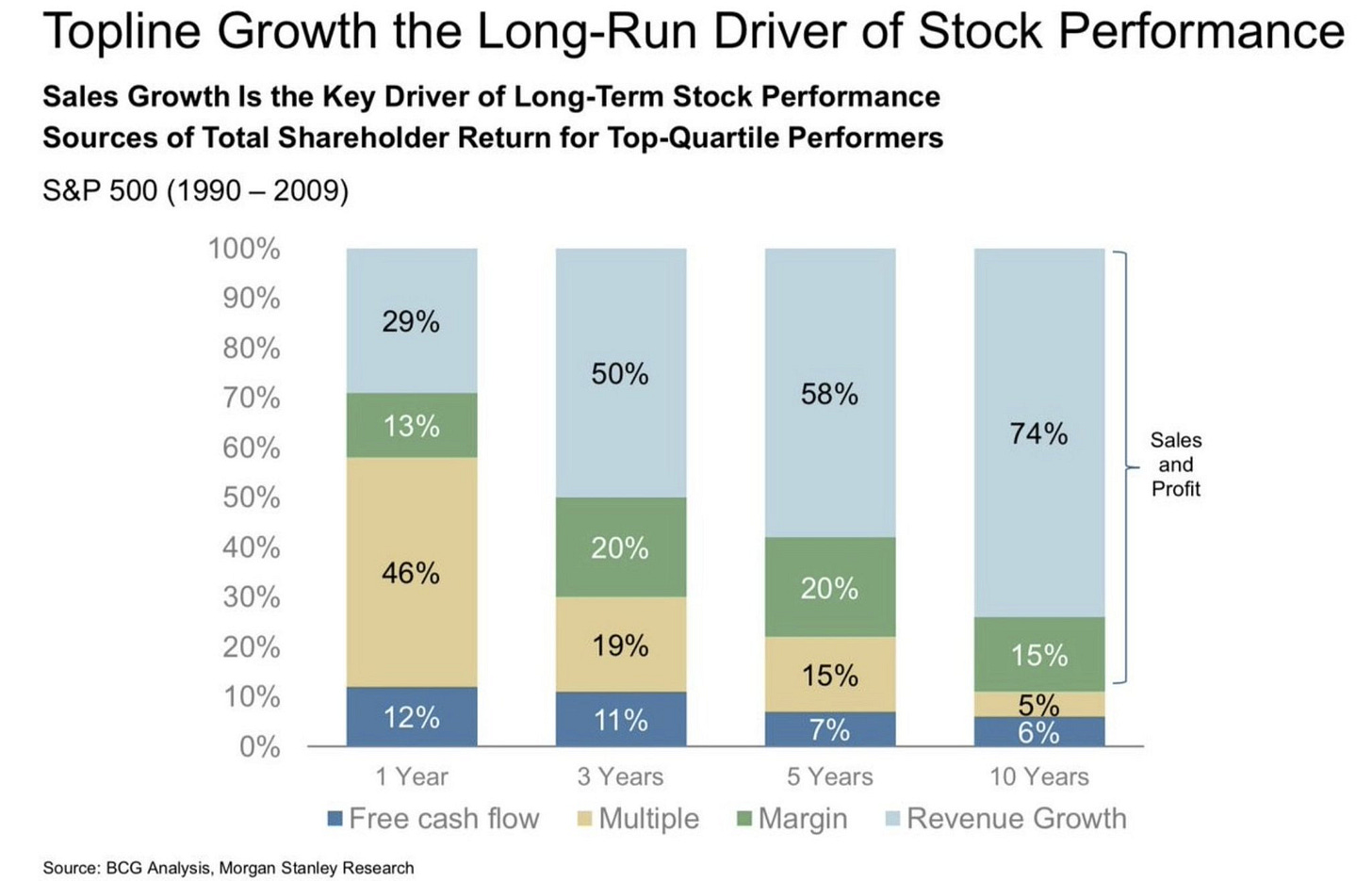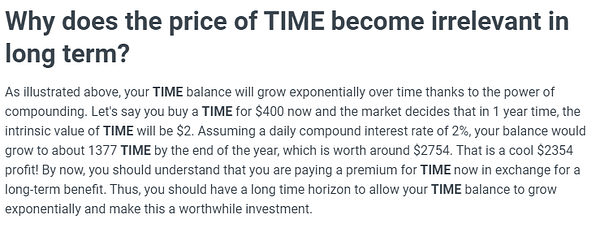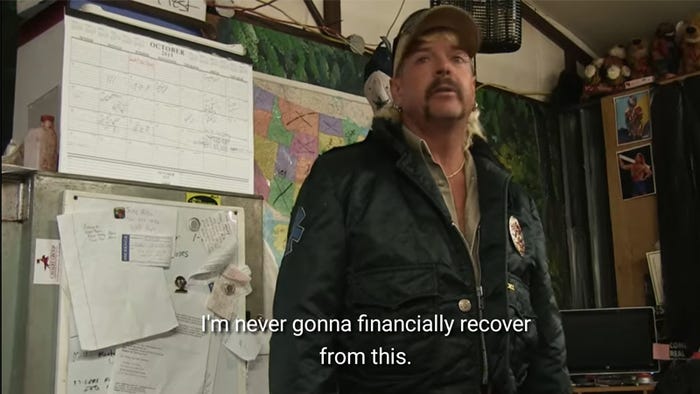Equity Portfolio Breakdown
Blue: Current value as % of my portfolio
Orange: Cost as a % of my total cost invested into equities
No hard rule on % cost allocation for stocks yet, nor a threshold where I will trim them. This chart simply visualises the divergence between my investment thesis and the market expectations of the company.
*Raised cash this month & hence showing it as a % of my portfolio.
Equity Portfolio Performance
Time-weighted returns (IRR):
CAGR* Performance:
*Note: Brokerages and most investors use IRR (time-weighted returns) as that is what most platforms provide. Practically speaking though, you’d want to know what 1$ of your investment (if all invested since inception) will be worth today. It’s a crude metric, but to everyday people, this is more relatable (since if I liquidated my $1 portfolio right now, I’d get $1.48 over my total cost invested). Still pretty good for 21 months.
IRR stats:
Portfolio Changes
Bought: $ROKU $U $OKTA
Sold: $NVTA $LMND $DNA
Crypto Portfolio Performance*
*Multiple is expressed as: Total crypto assets / Total cost into crypto. The last time I added real-life money into crypto was in July 2020. My starting point for comparison (being conservative) hence will be start of 2020. Portfolio breakdown will be fleshed out in the crypto section. I’ve included an index to track (assuming if I invested all my cost into BTC and hodl) my active investing performance in crypto.
% of Net Worth (exclude fixed assets) in:
Stocks: 17%
Crypto: 78%
Portfolio Commentary
Overall, my portfolio didn’t feel so good. From my memory, November had been marked by 2 distinct phases (as annotated in ugly red lines).
The first phase marked what I would call being seasonally bullish. Heading into the tail end of the year, it is generally observed that markets trend higher, especially in November and December. Despite that, once in a while, inflationistas repeatedly banged the drum on sky high inflation which was quite evident as the supply chain crisis exacerbates across the globe.
The overarching theme within this macro backdrop (particularly for my portfolio stocks) is one of high valuations. November was also the month where most of my companies report their earnings. One would think that given the high valuations, stock prices are less likely to go even higher. I was wrong, as Unity shot up to $200 with a good Q3 2021 result (I reviewed it in a thread here). Sure, some of it was due to its acquisition of Weta digital, but perhaps price increases are correlated to the amount of “metaverse” mentions during the earnings call transcript.
I kid.
In short, contrary to what people say, its near impossible to predict the post-earnings performance of stocks. Just because a stock has had a run before earnings, does not mean that the run cannot continue. Remember that the stock market is just an amalgamation of millions and millions of participants, each with their own thinking of how earnings will play out. It will only play out according to what you think if the cumulative net buying power of participants that have the same thinking are > those that think differently. Not as easy as people think.
Anyways, for November the markets was pretty mixed for the first phase (as above), until the stark reality of high inflation hit the FED as a signal markets are functioning well (second phase). They are announcing faster tapering of asset purchases from January onwards. The invisible hand of Mr. FED is long gone; what remains is a shadow of its former self as the market feeds on its self-serving momentum. I don’t try to time the market according to this, but there is a certain element of froth that can’t be denied by even the most ardent of Tesla fanbois.
Who will be the greater fool?
As a reminder, Cloudflare went from $20-$30 to $200; Sea Limited went from $50 to $300+. Did their revenue grow by similar amounts? A good time to rehash this pic.
It has been about 1.5 years since the COVID crash in March 2020. How much of the stock performance was due to multiple expansion? Rehashing another updated pic from Jamin Ball, writer of the Clouded Judgement:
I’m not predicting that there will be an impending crash. I am saying that there’s a detachment between stock price performance and business performance. Over the long term, there should be a convergence between fundamentals and the stock price.
There’s actually a third phase in the tail-end of November, where a new COVID-19 variant was discovered that seemed to have similar amounts of mortality, but way higher transmissibility than say Delta-variant or the original disease. The discovery happened during the last weekend of November, but that caused a quick crash in both stocks (index futures) and crypto as apparently, fear via the internet spread way quicker than the actual variant. Will we see another situation where stay-at-home stocks get bid again (aka $ZM, $TDOC etc)? Or will inflation take the central narrative in spite of omicron?
TL;DR: The stock markets rely much more on narratives than you think.
Ok, let’s not bore you with reused takes on how the markets will look like in 3 - 6 months. Nobody knows. I’m not smart enough to predict that either. Everything is just a simple calculated bet between probability & expected value. Moving onto my portfolio movements.
Portfolio movements
By and large, those that were expensive to begin with ($NET, $DDOG) went even more expensive. My trim of Cloudflare at $169 did not pan out the way I wanted to and I continued to be wowed by its stock (& business) performance. Likewise for many of my companies.
With the impending macro environment and just how far and fast these stocks have already been rising over the past year, I took a calculated bet that over the next few months, stock prices will generally be lower than where they are now. I also sold off 3 of my half-positions in Invitae ($NVTA), Lemonade ($LMND) and Ginkgo Bioworks ($DNA). These represent my biotech exposure & at the same time my more speculative bets.
Note that these companies are doing decent on their latest earnings. They are not bad companies. I simply wanted to raise cash for a future scenario where I can deploy capital to take advantage of market gyrations, and these 3 companies are the ones I’ve not got the highest conviction on. Even after selling I’ve only got 12% cash and so my portfolio is still exposed if the broader market tanks. In the long run though, 12% is more than enough dry power to deploy.
Always have cash on the sidelines.
Aside from the portfolio positioning, my partner and I are reducing our investment contributions by 50% for the foreseeable future as we are looking to settle down. As many Singaporeans will know, settling down (aka buying a house and marriage) requires way more money than you think. The housing loan and renovations alone will disrupt my investment plans, not to mention marriage and having kids. However, I also believe in the power of compounding, which is why I still try to contribute some money into the markets for as long as I can, and by raising cash within my portfolio by consolidating into my higher conviction holdings.
Portfolio Earnings
If you’re interested in my review of my portfolio companies, you can check out the threads linked in the meta-thread below. I’ve also tried to find and link other people’s threads within my own review if I found them to be insightful.

Note that there are still some companies that have yet to report on their Q3 2021 results (e.g., $SNOW, $CRWD, $OKTA). Those will be added once they’ve released their results and I’ve reviewed them.
This is also par for the course if you’re doing stock picking. No point owning stocks if you don’t even bother examining how the company does on a quarterly basis. It need not be a 10-tweet thread like mine, but just tracking financial and usage metrics to assess any acceleration and slowdown in execution will go a long way in building conviction. Of course, you won’t need conviction in a bull market where everything is up only.
You will need conviction in a bear market (or a crash) where stocks left and right are dropping 10% and suddenly you don’t know how the business is doing. Are they doing great? Is the stock price an accurate reflection of their fundamentals? Is there a mispricing?
If all of these sounds too much effort, you should simply buy an ETF and DCA into it over time. You can spend your free time on your hobbies or resting ;)
85% of investors fail to outperform the stock market over the long-term.
Probably not 85% as this study showed. But the point still stands (perhaps even higher for retail investors).
Crypto Portfolio Commentary
Before I continue with this section, you should note that like equities, crypto are risk-on assets. I like this helpful graphic from Macrodesiac, a macro newsletter & service I’ve followed (& am a lifetime subscriber to) since 2019. Risk off came during March 2020. Everybody and their mother’s stock crashed to some form of local low. Bitcoin crashed to sub $5000 at its lowest point.
Central banks worldwide stepped in; FED lowered interest rates and committed to insane amounts of asset purchases; markets started to get awash with liquidity as FED was just being the buyer of last resort. A helpful thread here by Sahil Bloom to understand why that resulted in higher asset prices. Bonds became un-investible overnight. Who would want to buy a bond with 0% nominal yield? Stocks became the boomer’s TINA (there is no alternative). Guess what crypto became?
From the crash in March 2020, there were many stocks (and crypto) that appreciated a ton. Fast forward to Nov 2021. Where are we now? Inflation prices are through the roof, and media outlets have been peddling rate hikes for ages. The Fed has also announced the tapering of the QE asset purchases, which will completely end in June next year.
In a nutshell, economies seem to be recovering and governments are prepared to remove the crutches and let the economy self-repair on their own. Naturally, the environment that was there during 2020 and this part year will be less favorable, also in part to combat inflation (of asset prices & money supply) that is seemingly spiraling out of control.
Either way, I’m here to tell you that you don’t need to worry about any of what I’ve just said. To be a good crypto investor, we don’t have to have a good understanding of the macro market. We also don’t have to know what the Fed is doing. Of course, in the short-term prices fluctuate based on sentiment directly caused by Fed’s actions or retail exuberance (or lack thereof)). I’ve also just seen crypto prices tanking this past weekend as the new COVID variant (Omicron) was discovered.
Prices promptly shot back up as Monday opened and Omicron was way less worse in terms of health risk than feared. Bitcoin back to 100k? Kidding, but this should hammer home the point as to why its extremely difficult to time things in the short run. Long-term though, prices should roughly reflect its fundamentals. This is true in stocks and in crypto.
Simply expand your time horizon, and you’ll do pretty well as a
cryptoinvestor.
Please note that you should not be in a position where you could be liquidated in such volatile movements. I do have crypto that is borrowed but I tend to keep it well below the recommended LTV ratio (more on that later).
Positioning wise, it’s always more profitable finding the projects (with good fundamentals) early, then hodling until the narrative plays out (taking profits along the way is good practice too).
I strongly doubt the perceived trading ability of anybody that started in 2020, since as implied in the Macrodesiac graphic above, a rising tide lifts all boats. Feel free to prove me wrong in the coming bear market. ;)
So much for my opening in last month’s crypto commentary:
Over the past month, I was trying to aggressively position for the upcoming Q4 2021 / Q1 2022 play, where I anticipate to be Bitcoin heading to $100k and L1 chains being way higher than they already are now. Nobody knows what will happen though.
Drawdowns are inevitable, especially for hyper-reflexive assets in crypto. My advice (which I haven’t been following to a T) is to have cash on the sidelines.
Always have cash on the sidelines.
For new investors wanting exposure, simply identify the projects you use actively or would like to support on a long term (> 1 year). Also, try the projects out. Join their community on Discord and mingle with the members and team. Just these simple action alone can build conviction.
Price wise, I wouldn’t recommend waiting too long for prices to dip, especially if you aren’t actively trading (we’re long-term oriented). Start an initial spot position, and determine how much more you would allocate if prices go 10/20/30% downwards or upwards. This ensures you always have exposure if the project does well.
If no dip, enjoy the ride. If dip, best to buy at key moving averages or whatever your indicator says price will retrace to. Price will likely dip beyond what you expected it to trade at in times of volatility, but it doesn’t really matter (for me anyway), since:
Crypto money, while a huge % of my net worth, is money I don’t strictly need for the next 5 years
I’m in spot exposure & not trading derivatives. Hence, my portfolio can tolerate heavy drawdowns without suffering liquidation
I am positioning for a future where crypto has succeeded in garnering mass adoption.
It is extremely unlikely that crypto adoption will take many steps (if any) backwards, especially since large corporations are open to incorporating crypto as payments (see Visa and here). I highly doubt countries will ban cryptocurrencies outright like China did, but will seek to regulate them like US or India to establish regulatory supervision (crypto undermines their political influence since it allows for permission-less transfer of value aka $$).
This fundamental point represents my floor in the fundamental thesis. As long as this is the case, over the longer term (3-5 years), price should be higher from where they are now. Who knows, it will go to 0. It will be devastating for sure, but I won’t have to resort to filing for bankruptcy.
Life is 100% full of non-100% bets, but 0% full of 100% bets.
Stay frosty guys. See you on the other side.
Crypto Portfolio
Not to be over-protective about my positions, I will only share those that I deem to be decent for longer-term holds (aka no degen bets or highly speculative ones), or those that I would like to have exposure to (even if it goes to 0). If you look hard enough on crypto twitter, you’ll find the degen coins quite easily.
My crypto positions
By themes (Not in order of Market value):
Large-caps: $BTC $SOL $FTT
Avalanche eco: $AVAX $XAVA $JOE
Luna eco: $LUNA $VKR $STT
Gaming plays: $PYR $YGG $MC
Others: $AR
Compass Mining (Capital Expenditure): $BTC (as miners will be used to mine bitcoin).
I will keep repeating: NOT FINANCIAL ADVICE. Please do your own research.
Yield Farm developments
I have made some changes to my yield / degen farming activities based on info alpha I consume from twitter, or just based on me chasing yields or rebalancing my portfolio. Notably, I made moves to increase my exposure towards the $LUNA and $AVAX ecosystems and had sold off all my L2 tokens in the Solana ecosystem.
A friend of mine asked if I bought any insurance for my farming activities. There’s actually insurance protocols out there covering for risks such as InsurAce and Nexus Mutual. If you’re interested, can check those out. For me, not everything has to be insured; that depends on the project, the team, and how long it’s stayed alive.
The what of the insurance cover is also important. For example, take note of 5, 7 and 9.
The predominant risk of any project are rugs, as loosely defined by an insider stealing the tokens and making a run for it (pt. 5), or an exploit done by a hacker based on bugs that were already known (which are probably disclosed on GitHub).
So what are we actually insuring? You can read that on your own, and you need to be cognizant of what they cover before you buy. I will to take my chances.
Solana
With half my FTT stack, my liquid BTC and SOL, I am still farming on Sunny (BTC), Saber (FTT). I have shifted my SOL stack to Mercurial Finance, where I also receive wLDO tokens for providing liquidity to SOL-stSOL pool. As a reminder, these are cross-chain liquidity pools. So for example, one should expect renBTC (Ren project’s BTC) to be the same price as the actual BTC itself. As such, the risk of impermanent loss (IL) is kept to a minimum. Of course, if the project fails, the price of renBTC will drop sharply, so its not like it’s risk-free. But for my risk tolerance, it is pretty close.
I have another position doing leveraged farming on $ORCA-USDC, which I had written about from last month. This marks the 2nd full month of farming, and I’m excited to share with you the results of my experiment. My total cost into this pool is $2050 USDC, just for info.
This is why its important to understand IL before you ape into any high triple-digit yielding farm. Don’t get fooled (often it’s not sustainable)! Here’s a good calculator I found for IL losses on Francium (seems to have potential in terms of better UI/UX + strategies for delta-neutral farming).
Interesting platform for yield farms…
Avalanche
Over the past month Avalanche went from $65 to $135 then back to $120. Seems like a Solana like euphoria, and credits due to Olympus DAO forks $TIME promising 87k% APY and a 8-hourly yield of 0.6%. Obviously, TVL migrated to where the yields are, which are on $TIME. Highly volatile though with these projects, do take care.
Last month I also realized the folly of not investing in avalaunch IDOs. I promptly did that for Crabada ($CRA) and Talecraft ($CRAFT). Here’s what I said in last month’s article:
🤯 A 5x in Oh! Finance, and ~33x in Kalao…?! Fk.
Fortunately, I lucked out and cashed in a ~30-40x in $CRA, selling at 2 instances at $0.8 and $0.68. My initial cost basis (with fees) was 0.019. It’s not like I’m a whale or anything; my allocation was only $20. For CRAFT my allocation was slightly higher at $35. I won’t be adding more tokens, will just take some profits and let it ride.
Elsewhere, I got really bullish on TraderJOE ($JOE) seeing how they’re by far the leading DEX on Avalanche and a portion of trading fees goes into burning $JOE, thus rewarding xJOE hodlers. See here for more info. With the xJOE, you can also farm it for additional JOE tokens. I am also loaning some USDT via their lending page, which I converted to xJOE.
Safe to say, I have high conviction. Beeg revenue.


Needless to say, I have also staked $XAVA since forever (just got reminded I actually started staking since Early Sept as I was eligible for this reward), so will just let it sit there for a 5%+ APY, and an allocation for the upcoming IDOs. I will assume this play will work until it doesn’t.
Alpha will seem like noise to the regular investor who don’t wish to put in the effort to understand things.
Terra/Luna
As mentioned above, I’ve started to be more involved in the various projects within the LUNA ecosystem.
I have staked some LUNA with Stader Labs, which rewards me in their SD tokens (APR of 10-11%). For native staking on L1 chains, the rewards for staking was quite surprising. Other chains like ETH or SOL provide about 5-8% for helping to secure the network. I also get small amounts of airdrops from the main protocols.
Beyond that, I’ve also gone with the popular anchor protocol, doing the farming play everyone is familiar with:
Bond LUNA for bLUNA as collateral
Loan UST from the collateral (I’m at 31% LTV, playing it safe).
Deposit UST into the savings to earn ~20% APY
This allows you to capture the price movements in LUNA (as well as the downside risk). Crypto prices can fluctuate a lot, hence I like to keep my LTV (aka margin of safety) conservative.
Next, I’ve bought a small sum of $VKR on the Valkyrie protocol to stake for a weirdly high 175% APR, with rewards automatically re-staked. I like the concept behind this protocol as its sort of a growth hacking engine for the Terra ecosystem (all on the blockchain). See this thread here.
Lastly, I have also staked some StarTerra (~11% APY), which is launchpad for IDOs with gamification embedded in the interface. This allows me to participate in IDOs via a lottery system. If I get it, great. If not, I will simply stake and hodl. Notable that they also allow non-Terra projects to raise money there (e.g. SolChicks which is on Solana).
Compass Mining
I’ve bought my miners on the 24th and 27th July. They were supposed to start mining in Sept 30 and Oct 30 respectively. They got delayed as the facility that was supposed to host them (a super large one) fell through. This is not new information as I talked about in my previous articles (see the similarly titled section). The USD stuck inside the miners hurts though.
On November 30th, Compass Mining gave us an update regarding the delayed miners, and said that the next earliest date will likely be from Dec 10 onwards to end of Q1. While definitely not ideal, at least it represents progress.
I kid. Thankfully, it wasn’t a big portion of my crypto portfolio, and hence I will be able to financially recover from this. Whilst delays are par for the course for any shipments, Compass Mining did compensate the affected miners for a total of $500 per affected machine. They’ve done this twice, so I’ve got $2000 in credits to use, so its not that bad. I paid ~7.8k for each machine, so the $2000 in credits can help offset future utility costs.
For that latest update above, they’ve also said that if I’m willing to wait (for the next available facility from Dec to Q1 end (which I am), they will waive 12 months of facility hosting. That’s about $150 per month per miner. So that’s another 3.6k in subsidies. Not all that bad.
Let’s pray that December will finally be the month I start hashing and stacking ‘dem precious sats…
Conclusion
Thank you for reading thus far. October’s portfolio review got me 100 viewers, which I will be forever grateful for. I really appreciate each and every reader for this article. My hope is that through this article, I improve my thought process & clarity, whereas you join me on this journey of life where I pursue the finer things in life: financial freedom & my passions (investing + crypto).
Rich or poor, I will be writing every month. I don’t need 1000 readers, but as long as 1 reader benefits from reading these articles, I will keep writing.
Have a great December, and Merry Christmas!
Cheers,
Joey



















